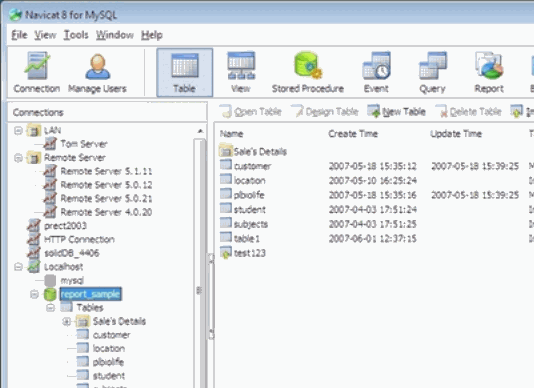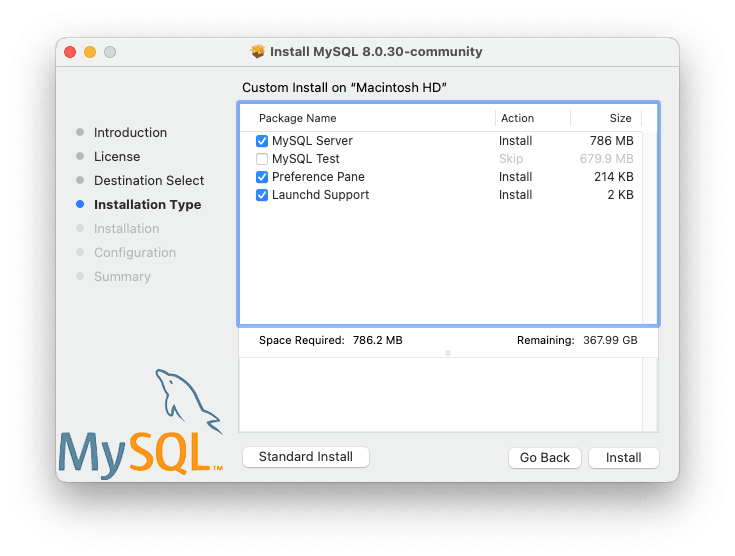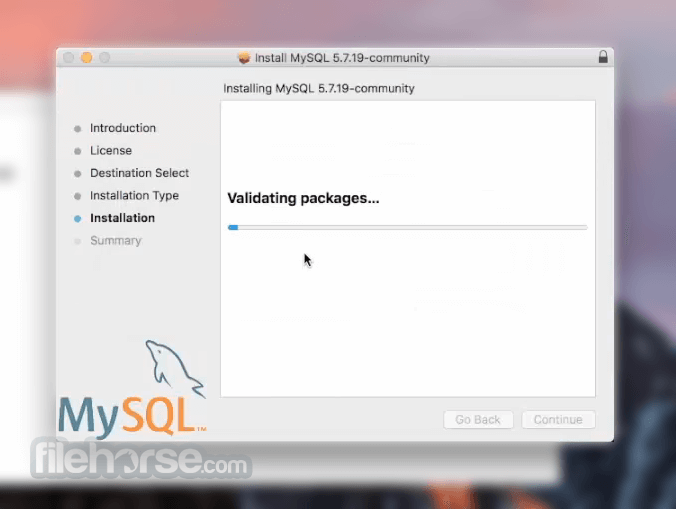The first step is to download MySQL server. Go to the MySQL web site and select the version that matches your version of Mac OS. Select the DMG. Archive version. After the DMG file finishes downloading click on it to open. MySQL Cluster is a real-time open source transactional database designed for fast, always-on access to data under high throughput conditions. MySQL Cluster Plus, everything in MySQL Enterprise Edition.
MySQL Community Edition is a freely downloadable version of the world's most popular open source database that is supported by an active community of open source developers and enthusiasts. MySQL Cluster Community Edition is available as a separate download. MySQL Database Server is designed for enterprise organizations delivering business critical database applications. It gives corporate developers, DBAs and ISVs an array of new enterprise features. Start MySQL: sudo port load mysql5-server. Stop MySQL: sudo port unload mysql5-server. Mac OS X Server. Mac OS X Server comes with MySQL pre-installed. For instructions on how to enable MySQL, see Setup on Mac OS X Server. Installing MySQL on a Virtual Private Server (VPS) Slicehost Articles. Install MySQL on Ubuntu Hardy Install MySQL on CentOS.
I manually installed the MySQL client on my MacBook Pro without homebrew. However, I also installed another MySQL server by homebrew. How could I remove the manual installed MySQL server? Thanks
MySQL is an open-source relational database management system written in C and C++. The MySQL server software itself and the client libraries is available on multiple operation system including macOS. To completely uninstall MySQL OS X it is necessary to remove numerous files and folders and edit one file. So in this article, we’ll show you how to uninstall MySQL from your Mac with minimal effort.
Table of Content:

Part 1: How To Manually Uninstall MySQL on Mac
Uninstall applications on Mac is as easy as 1-2-3. You simply need to find the app you want to remove in Applications folder, drag and drop it to Trash and it's done. However, some stubborn programs may cause you extra trouble. Here are the step by steo tips on how to uninstall MySQL from your Mac manually.
- Step 1: Open Finder on your Mac > Go to Applications > Drag MySQL.app To Trash.
- Step 2: After moving MySQL.app to Trash, you may have these MySQL related files left behind, like the data and files in database, log files, cached data, etc. So to get rid of these MySQL leftover junk files, you need to move further.
- Step 3: Open a terminal window > Use mysqldump to backup your databases to text files > Stop the database server and enter:
sudo rm /usr/local/mysql
sudo rm -rf /usr/local/mysql*
sudo rm -rf /Library/StartupItems/MySQLCOM
sudo rm -rf /Library/PreferencePanes/My* - Step 4: Edit /etc/hostconfig and remove the line MYSQLCOM=-YES-
sudo rm /usr/local/mysql
rm -rf ~/Library/PreferencePanes/My*
sudo rm -rf /Library/Receipts/mysql*
sudo rm -rf /Library/Receipts/MySQL*
sudo rm -rf /private/var/db/receipts/*mysql*
Important Note: The last three command lines are particularly important in regard of clean uninstall MySQL on your Mac. Because, as otherwise, you can't install an older version of MySQL even though you think that you've completely deleted the newer version!
Part 2: Common Problems of Uninstalling MySQL on Mac
Even you're a senior macOS user, it still has chance that you cannot clean and fully uninstall MySQL from your Mac. The common MySQL on Mac uninstalling problems are list below (Learn How To Completely Uninstall Programs on Mac).
- MySQL Data / Files / Icon / Shortcuts / Contest Menu that are related to MySQL have been found in the later use of your Mac.
- Manual removal of MySQL on Mac requires advanced knowledge about how macOS file system and how terminal works. Otherwise, any false operations, mistake deletions will bring troubles. For instance, other application (Safari) cannot open correctly, or even severer, your Mac may work abnormally.
To completely remove MySQL from your Mac you'll need a capable Mac App Uninstaller software like Omni Remover 2. It is the new Mac App Uninstaller software made to remove MySQL and other ill-behaved apps on macOS. Follow steps below to get rid of MySQL on your Mac in few clicks
Step 1: Download Omni Remover
Download and install Omni Remover on your Mac > Open Omni Remover.
How To Completely Uninstall MySQL on Mac Step 1 Step 2: Uninstall MySQL
In Omni Remover > App Uninstall > Click MySQL > Clean Uninstall.
How To Completely Uninstall MySQL on Mac Step 2 Step 3: Finish Uninstalling MySQL Mac
Then Omni Remover will start scanning all MySQL associated data/files > After it finished scanning, click Clean Uninstall to start uninstall MySQL from your Mac.
How To Completely Uninstall MySQL on Mac Step 3

It's just way easier with Omni Remover to uninstall MySQL from your Mac. Besides, Omni Remover can also scan your macOS, find and clean all unwanted app leftover junk files at one go. Free Download Now >
Omni Remover
Version 3.3.5 (January 31, 2020) / Support macOS Catalina
Category: Mac Uninstaller
More iPhone/Mac Related Tips
Tags: Uninstall iTunes MacUninstall Office 2011 MacUninstall FirefoxUninstall Kaspersky MacUninstall MacKeeperUninstall Google Earth MacUninstall Steam MacUninstall Adobe Flash MacUninstall Citrix Receiver MacUninstall Spotify MacUninstall Dropbox MacUninstall Skype MacUninstall Teamviewer MacUninstall uTorrent MacUninstall Sophos Antivirus MacUninstall Norton MacUninstall Soundflower MacUninstall WinZip Mac
Full MySQL Support
Sequel Pro is a fast, easy-to-use Mac database management application for working with MySQL databases.
Perfect Web Development Companion

Mysql On Mac
Whether you are a Mac Web Developer, Programmer or Software Developer your workflow will be streamlined with a native Mac OS X Application!
Install Mysql Server For Mac
Flexible Connectivity
Sequel Pro gives you direct access to your MySQL Databases on local and remote servers.

Easy Installation
Simply download, and connect to your database. Use these guides to get started:
Get Involved
Sequel Pro is open source and built by people like you. We’d love your input – whether you’ve found a bug, have a suggestion or want to contribute some code.
Get Started
Download Mysql Server For Mac
New to Sequel Pro and need some help getting started? No problem.
